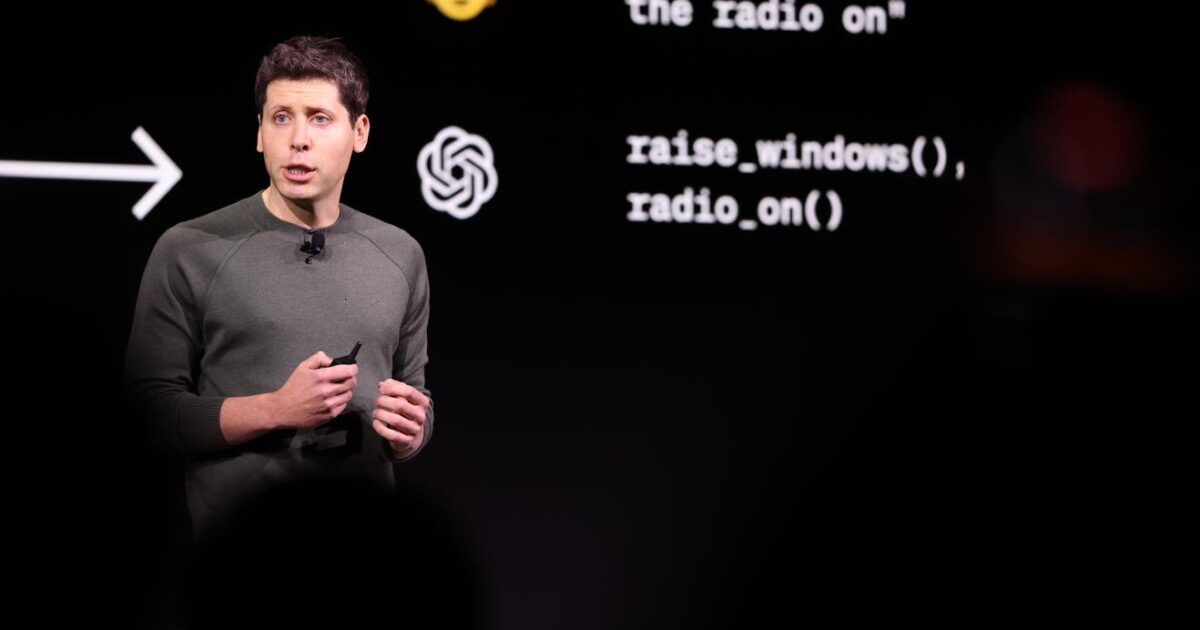The Hottest VC Deals Today Are No Revenue, No Product, Just All-Star AI Teams And Mega Rounds

SAN FRANCISCO, CALIFORNIA – NOVEMBER 06: OpenAI CEO Sam Altman speaks during the OpenAI DevDay event … More
The artificial intelligence industry just witnessed one of the most dramatic market distortions in Silicon Valley history. When former OpenAI CTO Mira Murati’s six-month-old startup Thinking Machines Lab successfully raised 2 billion dollars at a 10 billion dollar valuation, it crystallized a fundamental shift in how AI companies compete for talent. But this astronomical funding round isn’t just about one company’s ambitions – it’s the direct result of a compensation arms race that began with Meta’s desperate hundred-million-dollar recruiting spree.
The pattern is unmistakable: Ilya Sutskever’s Safe Superintelligence raised 1 billion dollars at a five billion dollar valuation with no publicly released product. Mira Murati’s Thinking Machines Lab secured 2 billion dollars at a 10 billion dollar valuation for a company that’s existed for just 6 months. These aren’t isolated incidents-they represent the new normal in AI investing, where talent portfolios command unicorn valuations before building anything tangible.
The Catalyst: Meta’s Hundred-Million-Dollar Gambit
The story begins with Meta’s aggressive talent acquisition strategy. According to OpenAI CEO Sam Altman, Meta began offering signing bonuses as high as 100 million dollars to poach top researchers from his company. Meta offered employees of rival OpenAI signing bonuses of 100 million dollars to switch companies, with even larger annual compensation packages. While later reports clarified that no one was really getting a hundred million dollar “signing bonus”, the psychological impact on the market was immediate and profound.
The timing of Meta’s recruitment blitz was strategic. As AI capabilities rapidly advanced and competition intensified, Mark Zuckerberg recognized that talent, not just capital, would determine market leadership. “The List” includes five ex-OpenAI employees as Meta looks to build reasoning models to contend with rivals, highlighting the systematic nature of this talent acquisition campaign.
The Ripple Effect: Inflating the Entire Ecosystem
Meta’s compensation strategy created an unintended consequence that reverberated throughout Silicon Valley. When established companies couldn’t match these astronomical packages, they inadvertently set a new baseline for AI talent expectations. Every engineer who heard about hundred-million-dollar offers – even if they didn’t receive them – began to recalibrate their own market value.
This is where Murati’s funding round becomes particularly significant. Thinking Machines Lab, the secretive AI startup founded by OpenAI’s former chief technology officer Mira Murati, has closed a 2 billion dollar seed round at a 10 billion dollar valuation. With this valuation, offering 1% equity to a senior engineer effectively provides the same hundred-million-dollar package that Meta was dangling, but with potentially unlimited upside.
The mathematics are stark: in a market where top talent expects hundred-million-dollar packages, startups need billion-dollar valuations just to compete.
This represents a fundamental shift from traditional equity-based compensation models where early employees accepted lower salaries in exchange for potentially valuable stock options.
The New Investment Paradigm: Talent Over Traction
This phenomenon extends beyond Murati’s success. The venture capital ecosystem has fundamentally shifted its evaluation criteria for AI startups. Traditional metrics like revenue, user growth, and product-market fit have been replaced by team pedigree, publication records, and previous company affiliations. Ilya Sutskever’s Safe Superintelligence exemplifies this trend, raising 1 billion dollars at a 5 billion dollar valuation with no publicly released product or service.
The mathematics behind these investments reflect a new understanding of value creation in AI. When a single breakthrough algorithm can generate tens of billions in market value, investors are essentially purchasing lottery tickets with extraordinarily high potential payoffs. The team becomes the product, and their collective expertise represents the company’s entire value proposition.
Industry Analysis: Winners and Losers in the Talent-First Economy
The current landscape reveals clear winners and losers in this talent war. Established tech giants like Meta, Google, and Microsoft can absorb massive compensation costs as operating expenses. Well-funded AI startups with venture capital backing can inflate their valuations to offer competitive equity packages. However, mid-sized companies and traditional enterprises find themselves increasingly priced out of the AI talent market.
The pattern is consistent across multiple high-profile cases. Companies like Safe Superintelligence and Thinking Machines Lab represent a new category of “talent unicorns” – startups valued primarily on their human capital rather than their technological assets. This shift forces traditional businesses to compete not just on product features or market positioning, but on their ability to attract and retain the small pool of elite AI researchers who command these premium valuations.
Competitive Landscape: The New Rules of Engagement
The AI talent market now operates under fundamentally different rules than the broader tech industry. While traditional software companies might offer senior engineers packages worth two hundred thousand to five hundred thousand dollars annually, AI companies routinely offer multimillion-dollar packages for similar roles.
This disparity creates several strategic challenges for companies across the ecosystem. First, it forces non-AI companies to either dramatically increase compensation or risk losing technical talent to AI-focused competitors. Second, it creates internal equity issues when AI engineers command significantly higher compensation than equally skilled colleagues in other domains.
The talent war has also accelerated the trend toward specialized AI roles. Companies are no longer just hiring “software engineers” but specifically recruiting “AI researchers,” “ML engineers,” and “AI safety specialists” at premium rates. This specialization further fragments the talent pool and drives up costs.
The Broader Economic Implications
Beyond individual companies, this compensation inflation has broader economic implications. It concentrates high-skilled talent in a narrow set of companies and geographic regions, potentially limiting innovation in other sectors. The astronomical valuations required to compete for AI talent also create potential bubble conditions, where companies are valued based on their ability to attract talent rather than their actual business prospects.
The phenomenon also raises questions about resource allocation efficiency.
When companies spend billions primarily to secure talent rather than develop products, it suggests that the current market structure may be creating significant inefficiencies. OpenAI CTO Mira Murati has reportedly doubled the amount of funding she’s seeking to raise for her startup Thinking Machines Lab, indicating that even initial funding targets proved insufficient to compete effectively.
Looking Forward: Sustainability and Market Correction
The current talent war raises fundamental questions about long-term sustainability. While venture capital markets can support inflated valuations in the short term, companies ultimately need to deliver returns that justify these investments. The pressure to monetize AI capabilities quickly may lead to rushed product launches or over-promising on technological capabilities.
Some industry observers argue that the current compensation levels are unsustainable and will eventually correct. However, the unique nature of AI talent—where individual contributors can have outsized impact on company success—suggests that premium compensation may persist longer than in other technology sectors.
The international dimension adds another layer of complexity. While US companies engage in bidding wars for AI talent, international competitors may gain advantages by accessing talent pools with different compensation expectations. This could potentially shift the geographic center of AI innovation over time.
Conclusion: A New Paradigm and Market of Talent Unicorns
The AI talent war represents more than just competitive hiring-it reflects the industry’s belief that artificial intelligence will fundamentally reshape the global economy. Companies are essentially placing multi-billion-dollar bets on their ability to attract and retain the individuals who will build these transformative technologies.
Meta’s hundred-million-dollar signing bonuses were intended to solve a specific recruitment problem. Instead, they created a market distortion that forced every other AI company to compete at similar levels. Mira Murati’s two-billion-dollar funding round at a ten-billion-dollar valuation represents the logical conclusion of this arms race: when talent becomes the primary constraint on growth, companies will pay whatever it takes to secure it.
The question now is whether this new paradigm will drive breakthrough innovations that justify the enormous investments, or whether it represents a misallocation of resources that will eventually require correction. Either way, the AI talent war has permanently altered the landscape of Silicon Valley compensation, creating new rules that extend far beyond the artificial intelligence industry itself.
For now, one thing is certain: in the battle for AI supremacy, reputable AI talent has become the ultimate currency, and the price of that currency continues to climb.

